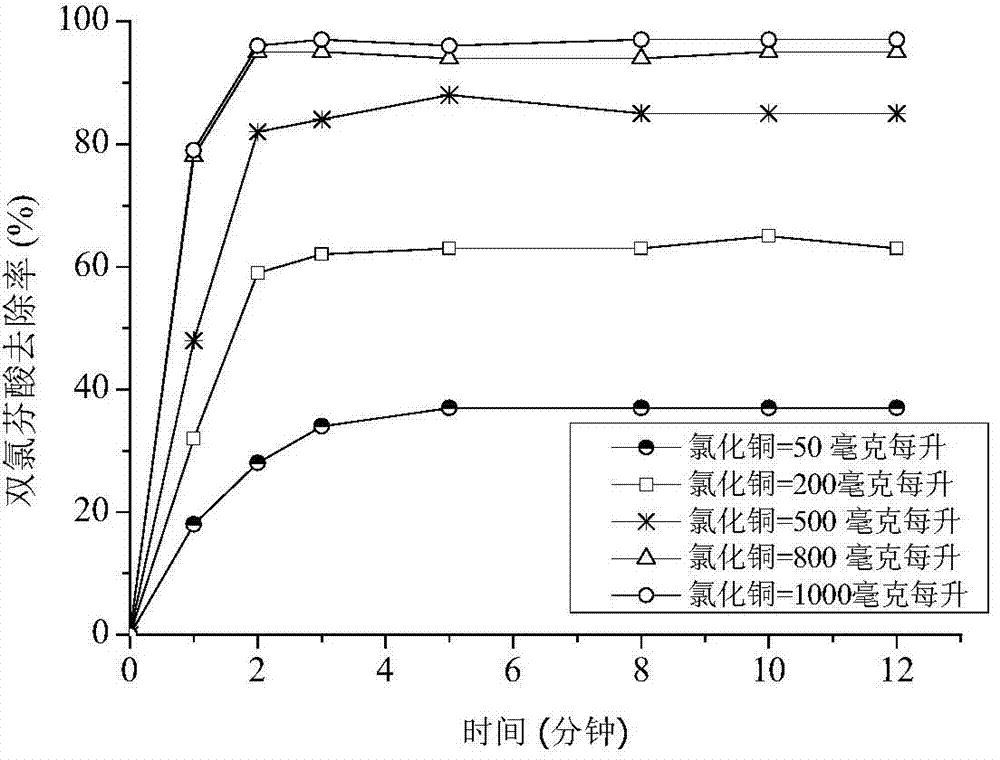Method for removing diclofenac contained in sewage by utilizing copper-iron heterogeneous fenton technology
A heterogeneous Fenton and Diclofenac technology, applied in chemical instruments and methods, oxidized water/sewage treatment, water/sludge/sewage treatment, etc., can solve problems such as reducing the catalytic effect of hydrogen peroxide, and achieve a wide range of applicable targets. , Conducive to resource utilization and low construction cost
- Summary
- Abstract
- Description
- Claims
- Application Information
AI Technical Summary
Problems solved by technology
Method used
Image
Examples
Embodiment 1
[0026] A method for removing diclofenac in sewage by using copper-iron heterogeneous Fenton technology to treat sewage containing 30 mg of diclofenac per liter.
[0027] Adjust the initial pH value to 3, and add 50 mg of copper chloride per liter of sewage to the system, add 700 mg of hydrogen peroxide per liter of sewage, and 1.5 grams of nano-zero-valent iron per liter of sewage, and stir evenly. The particle size is 50-70 nanometers. The removal rate of diclofenac in sewage was detected at different reaction times.
Embodiment 2
[0029] The difference from Example 1 is that 200 mg of copper chloride is added to the system per liter of sewage.
Embodiment 3
[0031] The difference from Example 1 is that 500 mg of copper chloride is added to the system per liter of sewage.
PUM
| Property | Measurement | Unit |
|---|---|---|
| Particle size | aaaaa | aaaaa |
Abstract
Description
Claims
Application Information
 Login to View More
Login to View More - R&D
- Intellectual Property
- Life Sciences
- Materials
- Tech Scout
- Unparalleled Data Quality
- Higher Quality Content
- 60% Fewer Hallucinations
Browse by: Latest US Patents, China's latest patents, Technical Efficacy Thesaurus, Application Domain, Technology Topic, Popular Technical Reports.
© 2025 PatSnap. All rights reserved.Legal|Privacy policy|Modern Slavery Act Transparency Statement|Sitemap|About US| Contact US: help@patsnap.com


